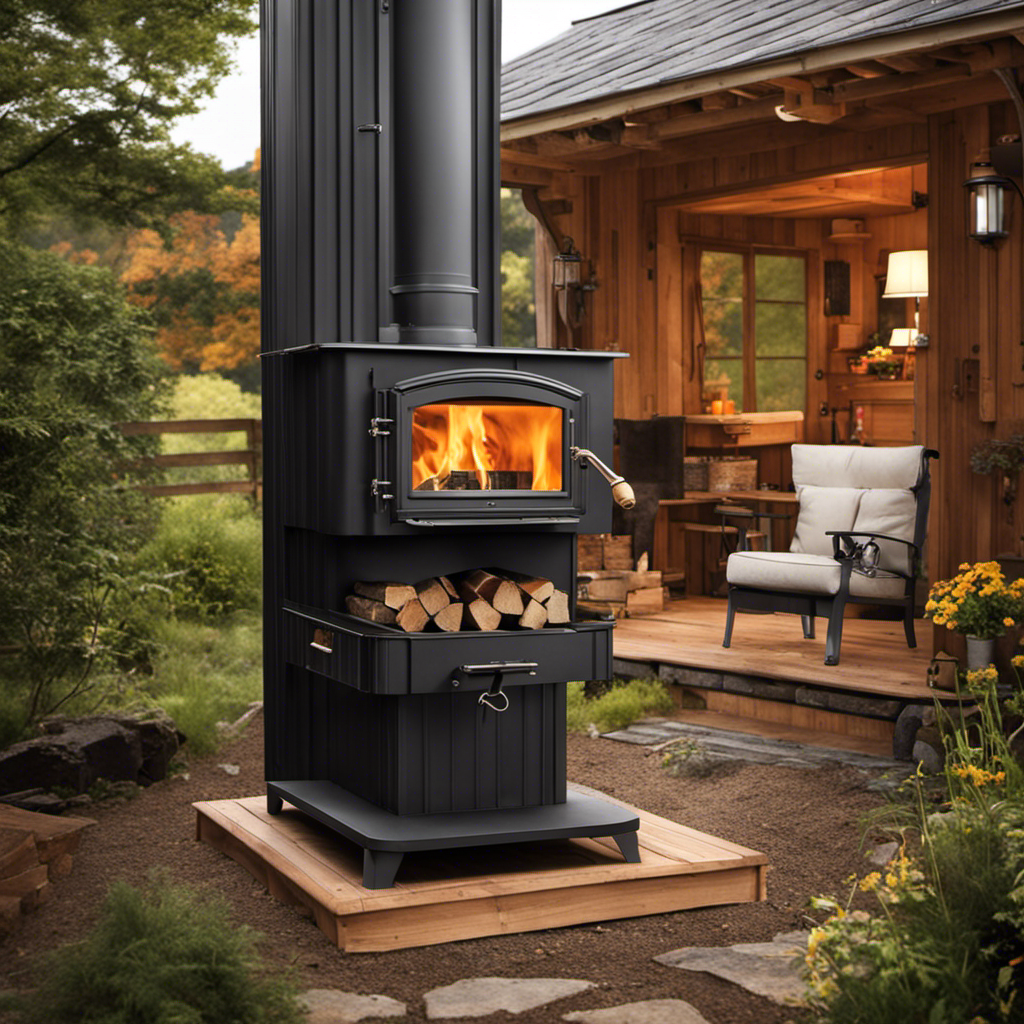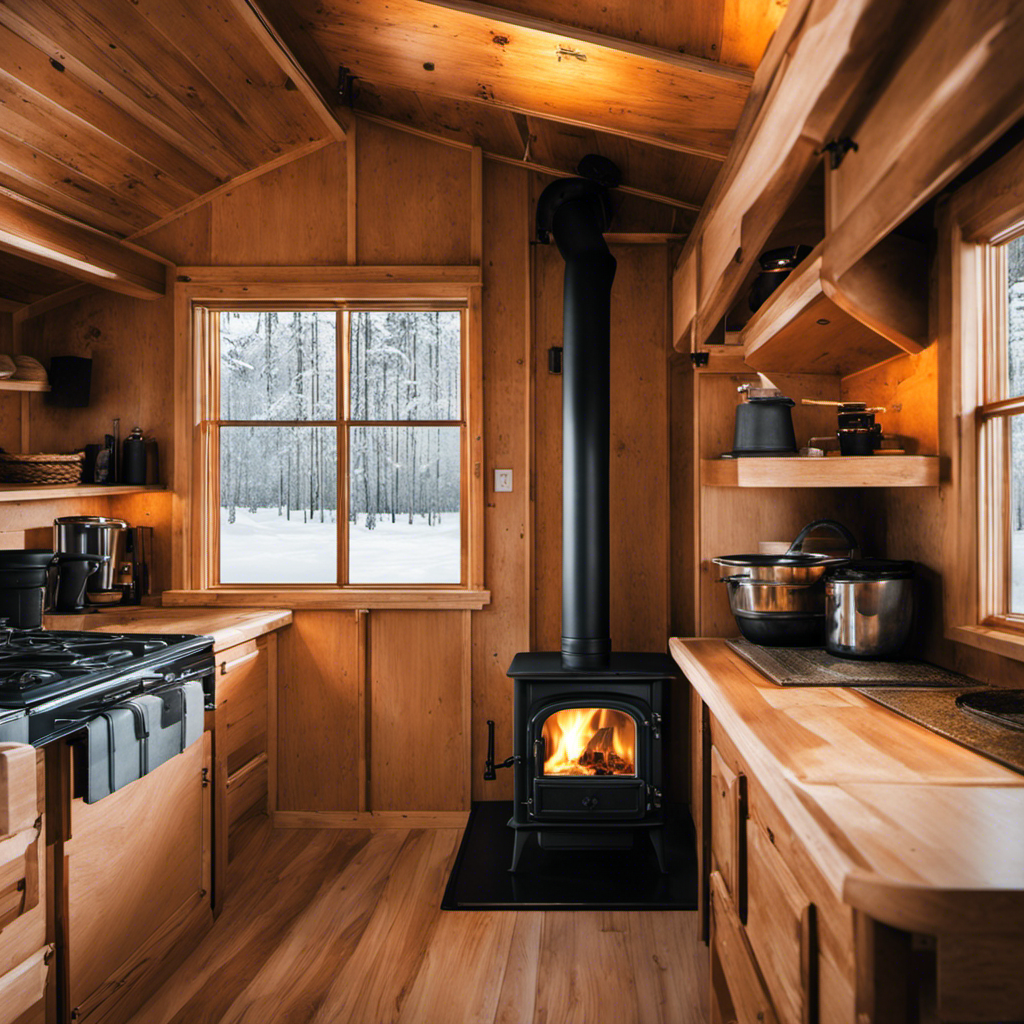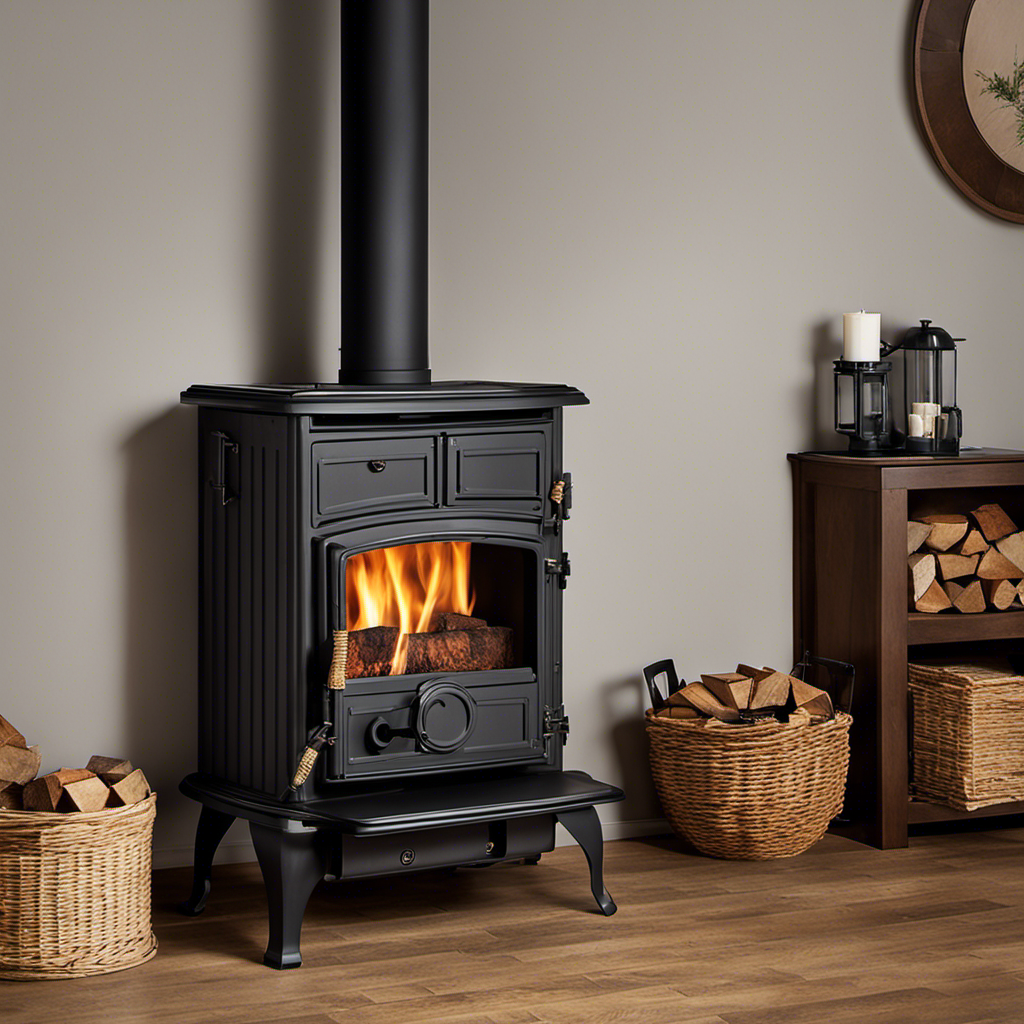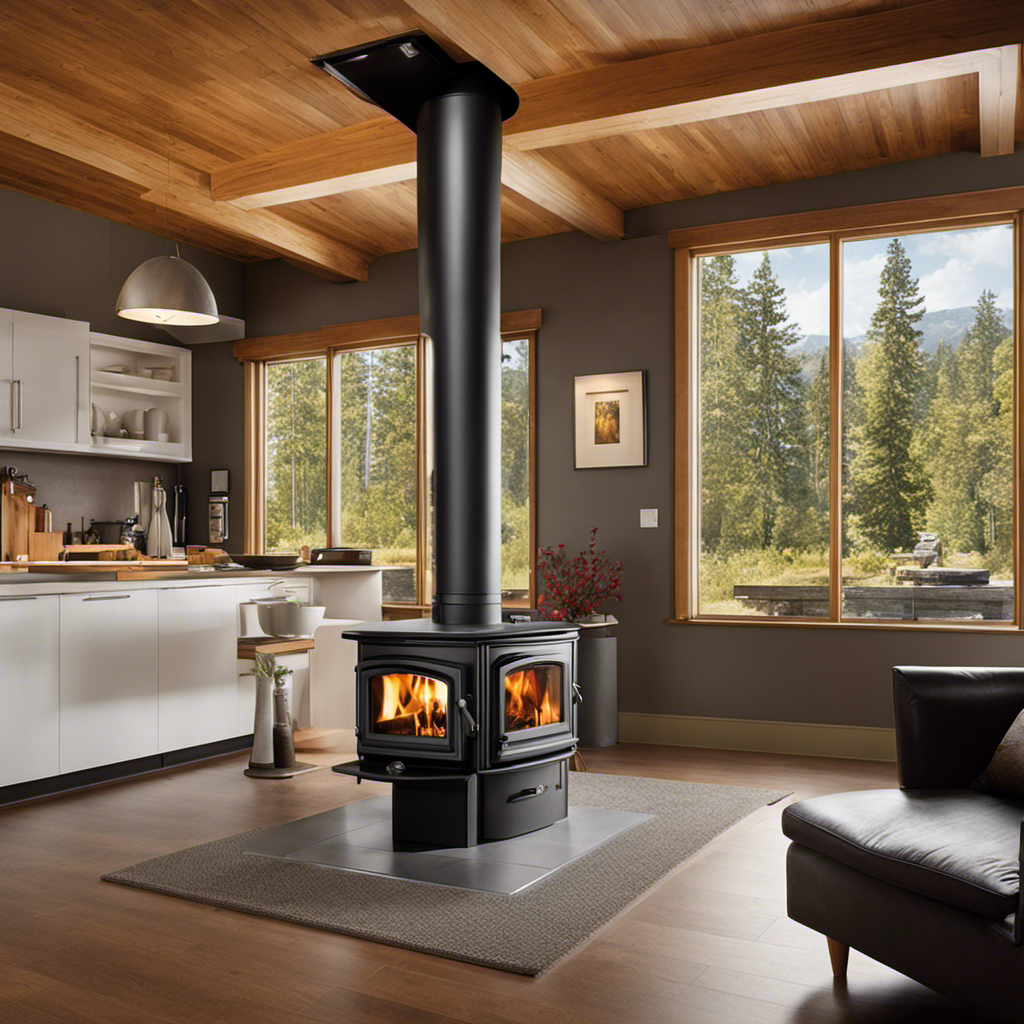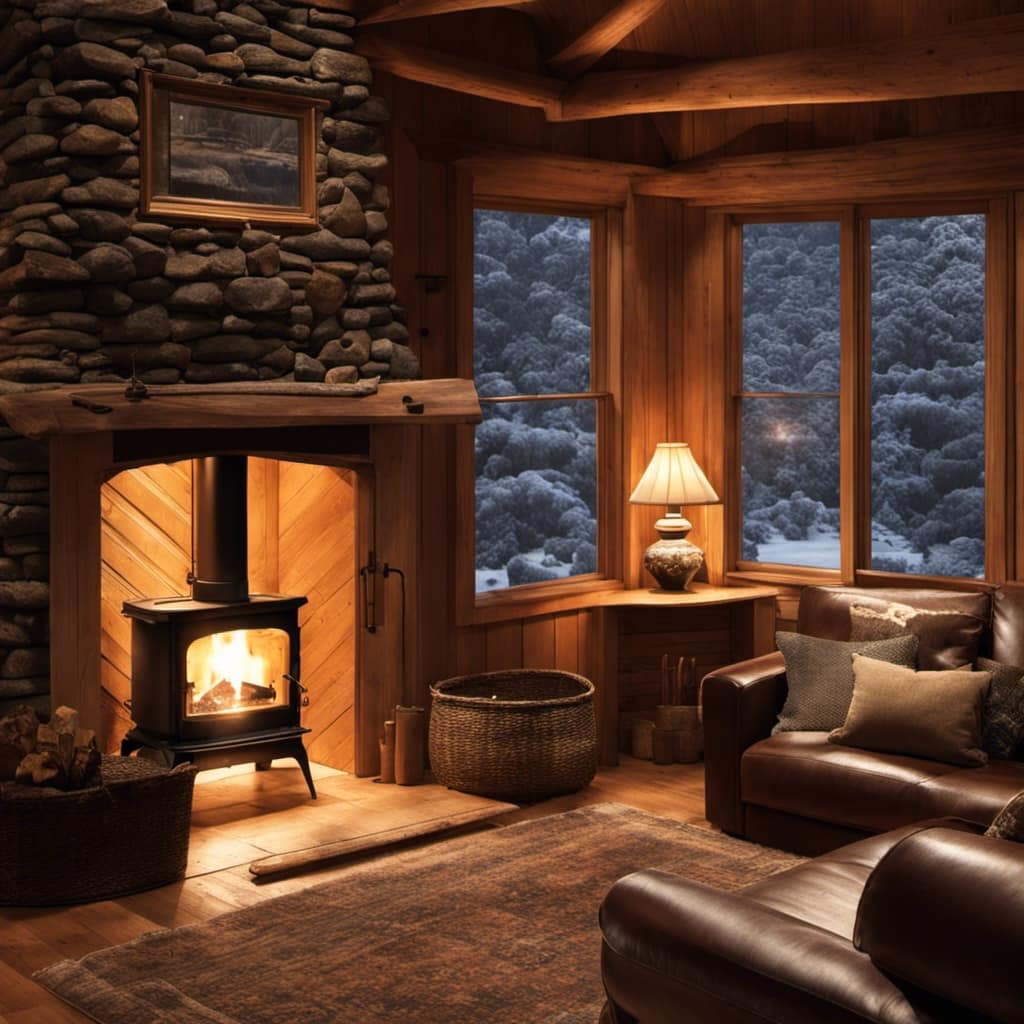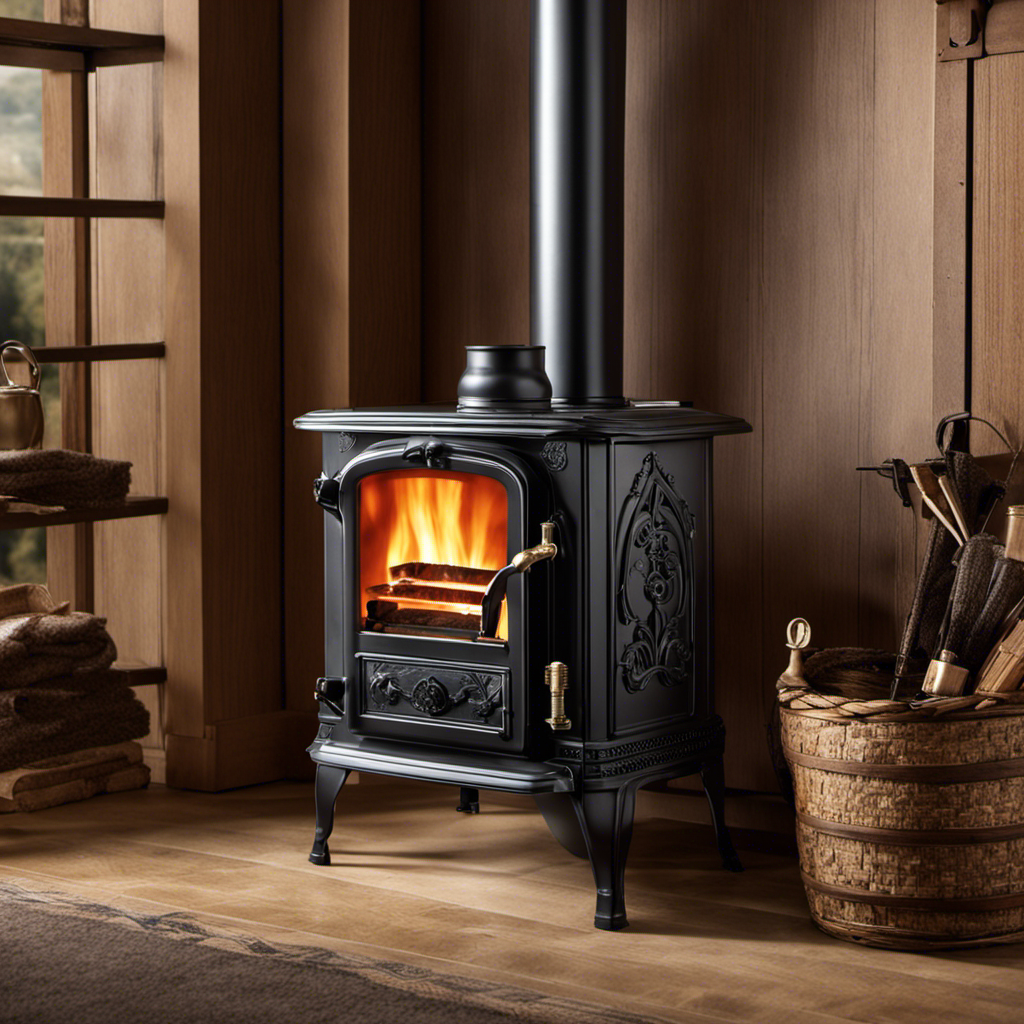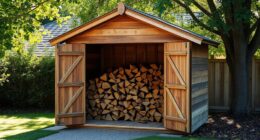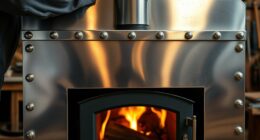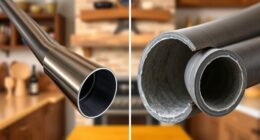I have always had a strong passion for spending time outdoors, especially in the colder months. However, staying warm has always been a struggle. This inspired me to start a project to create my own outdoor wood stove.
It’s not as difficult as you might think! In this article, I’ll share my step-by-step process for constructing an efficient and cost-effective wood stove that will keep you cozy all winter long.
So grab your tools and let’s get started!
Key Takeaways
- Select the right location with ample clearance and good air circulation
- Gather all necessary materials and tools beforehand and choose the right type of wood
- Build a sturdy and level base with proper ventilation and a chimney or flue
- Carefully install and secure the firebox and flue components, ensuring efficient smoke removal and proper operation
Selecting the Right Location for Your Outdoor Wood Stove
I’m deciding where to place my outdoor wood stove to ensure proper ventilation and safety. Choosing the ideal spot is crucial to maximize its efficiency and prevent any accidents.
Firstly, I need to consider the distance from my house and other structures. The stove should be at least 10 feet away from any combustible materials to avoid the risk of fire. Additionally, I must ensure there’s ample clearance around the stove for easy access and maintenance.
Secondly, I need to think about ventilation. The stove should be placed in an open area with good air circulation to prevent smoke buildup.
Lastly, I need to consider the terrain and ground stability to ensure the stove sits on a level and sturdy surface.
Following these safety precautions will guarantee a safe and enjoyable experience with my outdoor wood stove.
Gathering the Necessary Materials and Tools
To efficiently build an outdoor wood stove, it’s important to gather all the necessary materials and tools beforehand. This ensures a smooth and uninterrupted construction process.
When gathering materials, keep in mind the importance of choosing the right wood for your stove. Hardwoods like oak, maple, and birch are ideal choices as they burn longer and produce more heat. Softwoods like pine and spruce can also be used, but they burn faster and may require more frequent refueling.
Proper maintenance of an outdoor wood stove is crucial for its longevity and performance. Regularly cleaning the chimney, inspecting for any damage, and ensuring proper airflow will help keep your stove in top condition.
With all the materials and tools in hand, let’s move on to building the base and structure of your wood stove.
Building the Base and Structure of Your Wood Stove
First, gather the required materials and tools, and then construct the base and structure of your wood stove. When building the base, ensure that it’s sturdy and level, as this will provide a stable foundation for your wood stove.
Next, focus on constructing the structure of the stove. Consider the design of the wood stove, ensuring that it’s efficient and safe. Incorporate a ventilation system that allows for proper airflow, preventing the buildup of harmful gases. This system should include a chimney or flue that directs smoke out of the stove and away from the surrounding area. Additionally, include vents that can be adjusted to control the amount of air entering the stove, allowing you to regulate the temperature and combustion process.
Installing the Firebox and Flue System
When installing the firebox and flue system, make sure to carefully align and secure the components to ensure proper ventilation and efficient smoke removal. This is crucial for the safe and effective operation of your outdoor wood stove.
Here are some key steps to follow:
-
Installing the chimney pipe: Ensure that the chimney pipe is securely connected to the firebox and extends above the roofline to prevent smoke from entering your living space.
-
Insulating the firebox: Use high-quality insulation materials to line the firebox, which helps to retain heat and maximize efficiency.
By following these steps, you can ensure that your outdoor wood stove functions optimally, providing you with warmth and comfort.
Now, let’s move on to the finishing touches and safety considerations to complete your wood stove installation.
Finishing Touches and Safety Considerations
I have carefully considered the finishing touches and safety considerations for my outdoor wood stove.
When it comes to safety precautions, one of the most important things to remember is to have a fire extinguisher nearby at all times. This will ensure that you can quickly put out any potential fires that may occur.
Additionally, it’s crucial to have a sturdy and stable base for your wood stove to prevent it from tipping over. I recommend using concrete or bricks to create a solid foundation.
In terms of maintenance tips, regular cleaning is essential to keep your stove in good working condition. Remove any ash buildup and clean the flue regularly to prevent blockages.
Frequently Asked Questions
How Much Does It Cost to Build an Outdoor Wood Stove?
Building your own outdoor wood stove can be cost-effective compared to buying one. By comparing prices and materials, you can save money and customize the stove to your needs. Plus, it’s a rewarding DIY project.
Can I Use Any Type of Wood for My Outdoor Wood Stove?
I’ve found that using the right type of wood for my outdoor wood stove is crucial. Different woods burn at different temperatures and produce varying amounts of smoke. It’s important to choose the best wood for efficient and clean burning.
How Long Will the Fire in My Outdoor Wood Stove Last?
The fire in my outdoor wood stove can last for several hours, depending on the type of firewood used and how it is stored. Properly seasoned hardwoods like oak or maple provide longer burning times.
Can I Use My Outdoor Wood Stove for Cooking as Well?
Yes, you can use an outdoor wood stove for cooking. It adds a rustic flavor to your food and allows for versatile outdoor cooking. However, regular maintenance is crucial to ensure optimal performance and safety.
Are There Any Specific Safety Precautions I Need to Take With My Outdoor Wood Stove During the Winter Months?
During the winter months, it’s important to take specific safety precautions with your outdoor wood stove. This includes regular winter maintenance and preventing snow buildup to ensure safe and efficient operation.
Conclusion
In building your own outdoor wood stove, you have embarked on a journey of warmth and connection with nature. With careful location selection and the right materials, you can create a structure that will bring comfort and joy to your outdoor space.
Remember to prioritize safety and follow the necessary steps to ensure a successful build.
Now, go forth and embrace the cozy embrace of your homemade wood stove, as it becomes the heart of your outdoor sanctuary.

